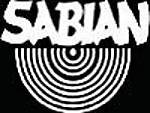In looking into the problem with the gun mount and the equilibrators, I came across a detail that Gary Edmundson had included in his build in the Osprey "Modelling the German 15cm Bison and Grille". That detail is the inclusion of two additional round racks in the floor area ahead of the rifle racks. This item doesn't show up in any of the interior photos in MBI and Spielberger because of angles but Gary mentions he used photos of a Grille recovered in Austria from the river Enns so I'm guessing that's where he got it from. It's not something mentioned in the DML instructions but additional ammo racks are available on the sprues, so I painted 2 up and stuck them into position. It makes sense to me that this space would be used for this since there's no radio operator and it's just dead space otherwise.

Returning to the left side, I installed the missing MP40 after test fits with the lower hull to get it in the correct position. The gunner's seat was also added and I scrounged a firing table decal from an unused set from the Bronco Marder I that I trimmed down to size and applied with Solvaset. Some weathering was added in the form of some Burnt Umber stippled in place for some scuff marks and then counter-stippled with the base coat color to break it up and provide some randomness. A pin wash of Raw Umber was also applied and then the base coat dry brushed over that to blend it back in where needed. A spray coat of Testors Lusterless Flat was applied to seal it all in prior to installation.

The same process was also applied to the right side.

I also assembled and installed the radio operator's chair and began the assembly of the fighting compartment. First up was the installation of the front plate. In order to achieve that, the gun travel lock needed to be installed and mated up with the latch on the interior through the little key-hole opening in the front plate. Once that had dried, I glued the front plate down with liquid glue and let it set up. I finally figured out what the pre-bent piece of steel wire that was provided as part MC-2 was for...it's supposed to represent the wiring conduit for the Notek light. I wrestled with it for a while trying to get it to fit into the proper position and finally gave up. Reference photos show it's supposed to hug the joint between the glacis and the superstructure front plate but the wire's too big for that to actually happen, so I left it off.

Now came the moment of truth, time to add the superstructure sides and the rear doors and central panel to create the fighting compartment. After much thought, I decided to mount the tools later as I'm worried that there's not enough clearance at the front for example to mount the wire cutters and sledge hammer as called for in the instructions. Rather than have them possibly interfere with the compartment sides, it was more important that they fit properly first and I'll worry about the tools later. Due to the way the end curved brace has to fit under the engine access hatches, it has to be slid into position first since it fits sort of like in a groove and then the sides slid into position. Can't do that if the tools or gear on the rear portions of the fenders are installed, so that too will come later. I added the left hand side first with regular glue for the joins along the sides and once that had started to set I used liquid glue and finger pressure for the joint with the front plate. The same process was then repeated with the right side and when both sides were solid, I added the hinge points and installed the rear doors and center panel. A very small amount of putty was needed at the join on the front right side near the base but otherwise everything went together smoothly.


Completing the effort for today, I detailed the gun breech using enamel Silver for the interior of the breech and the sliding block. The activation handle was painted with non-buffing metalizer Gunmetal and then dry brushed with steel as were the elevation wheels. The gun sight was also detailed and the eye piece drilled out with a pin vise. The interior portions of the gun were given a wash of Raw Umber and then dry brushed with the base coat. The contact rails for the recoil sled were painted with Steel for their bare metal look to round things out. The rest of the gun will be weathered along with the exterior when the time comes after it's been installed.

Total Session Time: 7.25 hours
Total Time to Date: 45.5 hours













































